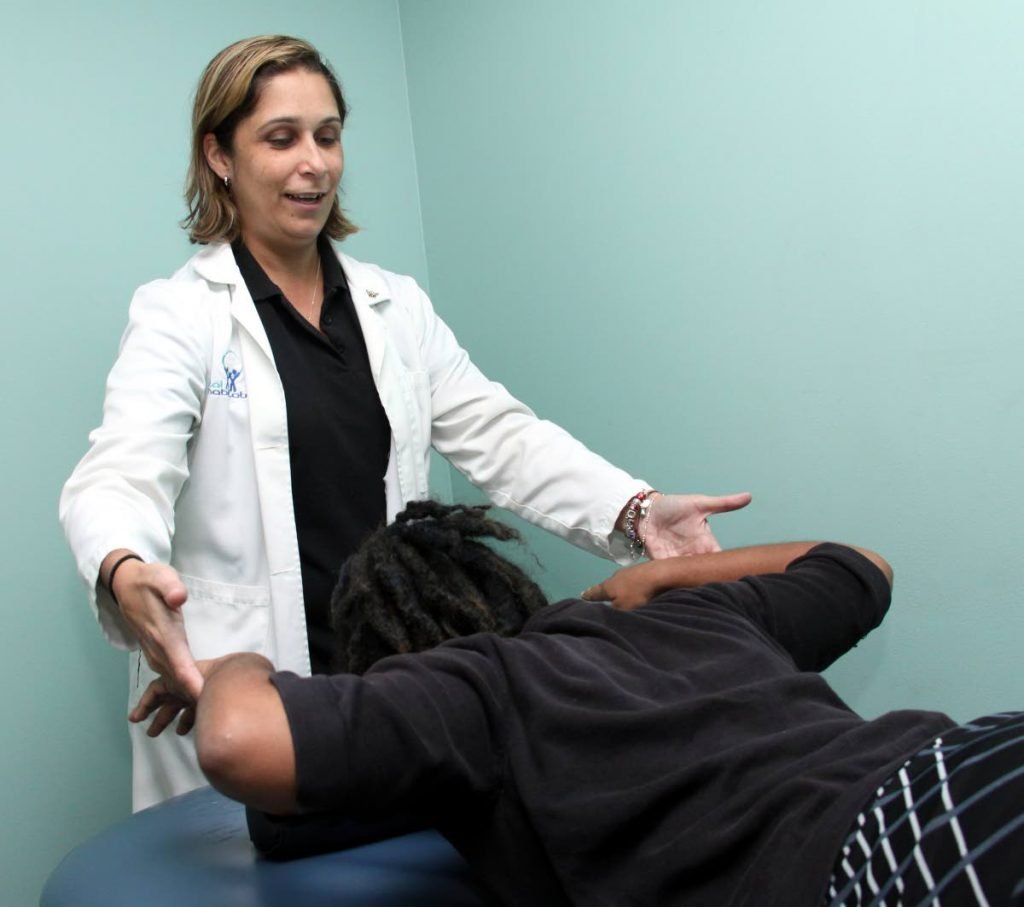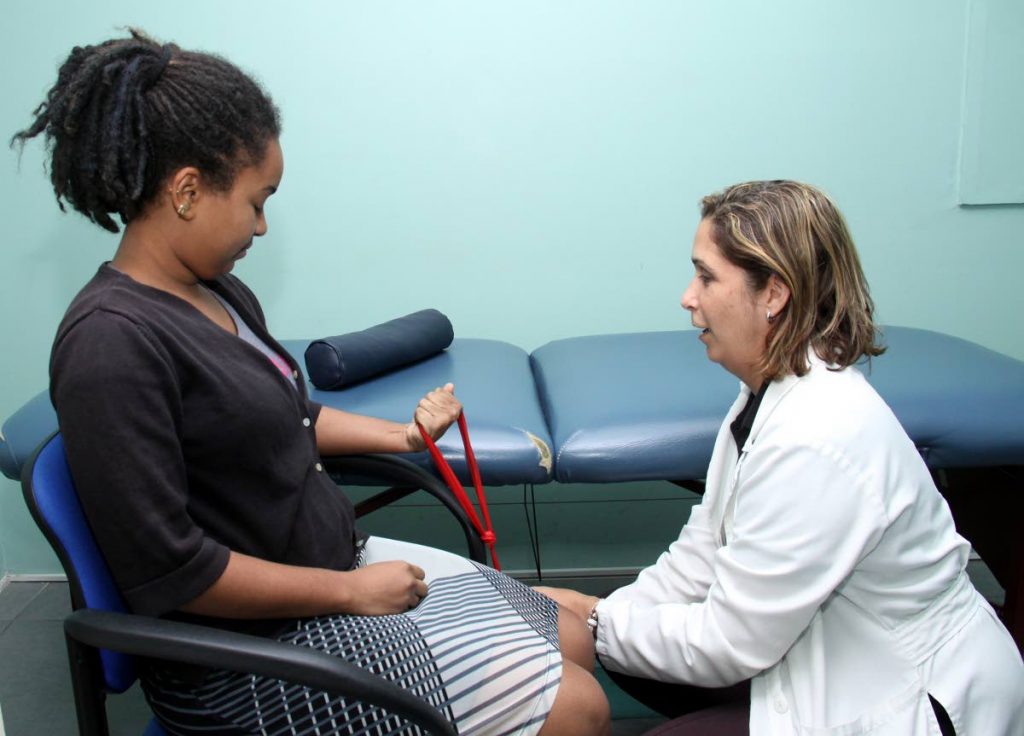Pain of playing pan

PAN players, both young and not so young, agree that playing the national instrument is out of love, but what does that love cost, physically?
Sunday Newsday met with physical therapist Dr Nicole De Freitas at Total Rehabilitation Centre, Boundary Road Extension, San Juan, to discuss the physical costs of pan playing.
De Freitas, who has treated pan players in the past, said the most common injury was due to improper posture. “Because of the posture they will have to be in, particularly for Carnival time, and since they practise for hours, usually after a full day of work, and some have children, so they tend to strain their muscles," she said.
She suggested, "One way to prevent aches and pains is adjusting the height of the pan to at least the waist level so the player can play their notes without bending forward excessively, as well as have the pans closer so that they don't overstretch.”
Single pan, as it is called now, is the evolved version of pan-round-the-neck. This practice of hauling pans, from the tenors in front to the bass to the back, stopped after pan players realised the pans were too heavy, put them on stands and, when needed, wheeled them around.
Single-pan arranger Keith Simpson said he had been playing for over four decades and played in the pan-round-the-neck era. While the pan around the neck was harmful then, the joy of playing eclipsed any and all pain, he said – a sentiment shared by many a pan player to this day.
Simpson recalled a story of a pan player’s foot being run over as the pans were pushed through the streets of Port of Spain and the player suffering a fracture. Talking about the pain of lugging a steelpan around the neck for hours at a time, he said there are "risks.”

Those risks, according to De Freitas, include rotator cuff tendinitis and adhesive capsulitis, injuries to the shoulders caused by overworking the muscles. She said given the weight of the bass pan sticks, coupled with the stretching bass players do in large bands, they could strain both their shoulder and wrist muscles.
“We can possibly look into changing the weight of the pan sticks, particularly the bass pan, given that the sticks are weighty, and, with the already outstretched arms, can add to the damage. But that is out of my field.
"What can counteract possible injuries is doing strength-training exercises – wrist strengthening, or do focus strengthening on each joint."
Strength and endurance were needed in order to avoid injuries, De Freitas said, adding that in the long run, pan players who are not treated or do not care for themselves can develop chronic pain.
Pan tuner, inventor and arranger Andy Neils of Arima All Stars said he has self-remedied his back: he no longer sits as long as he used to while tuning or arranging, and would alternate between standing and sitting to give himself some ease. He added, though, that while he does not have much pain to complain about, other people complained to him about “going deaf.”
Simpson said in his 40-plus years of involvement in pan he had heard many stories of tuners going deaf from being in the rhythm section, particularly those who play the iron in the large bands. Another arranger, Derek Boucaud, said the loss of hearing among pan players and, in particular, tuners was nothing new. Boucaud, who is the arranger of St James Tripolians, said tuners now use earplugs but he and Neils prefer the old method of listening to the pan without protective gear.
Speaking at his panyard in Fort George, St James, Boucaud said: “Pan is a culture that does take very long to evolve, because a lot of the older ones believe that the way they used to do it is the way to do it.
"I never had problems with my hearing. What I had is back pain, and for a lot of people is back pain too. What happens is that some of them tall and the pan stands low, so they have to bend to play, and that affects their backs.”
Boucaud said adjustable pan stands can assist ,but many older players choose not to use them.
Pan Trinbago president Beverly Ramsey-Moore agreed there should be more awareness of the ergonomics of pan playing but the organisation had never received formal complaints about players experiencing pain or discomfort, even though that is widely known. She said there are adjustable pan stands in use and panyards are increasingly encouraging their players to stretch before and after practice, but agreed more could be done to educate players about the importance of proper posture.

PHOTO BY ANGELO MARCELLE
De Freitas’ advice to pan players is to approach their craft like an athlete, and strengthen their muscles in the “off season,” so that during the Carnival period, when players are in high demand, they don’t strain their bodies. She advised doing planks and other core-strengthening exercises to alleviate strain on the back as well as strengthening the gluteus, quads, hip and hamstring muscles.
Also, she said, “During your play, when you have time to step off, it is good to stretch and stretch before the next day.
"It would be lovely to take a rest every other day, but how practical is it?
"If you enjoy participating in Carnival and being part of Panorama, then perhaps in the off season you need to focus on strengthening the upper back muscles, your core, hips, legs. Do things out of the season and work on the fitness level as well, because they don’t just stand and when they play, they play and they play with energy."
She also recommended, "good sneakers with a good comfortable sole with arch support. Some people like flat sandals but that is not the best for standing for long hours.”


Comments
"Pain of playing pan"